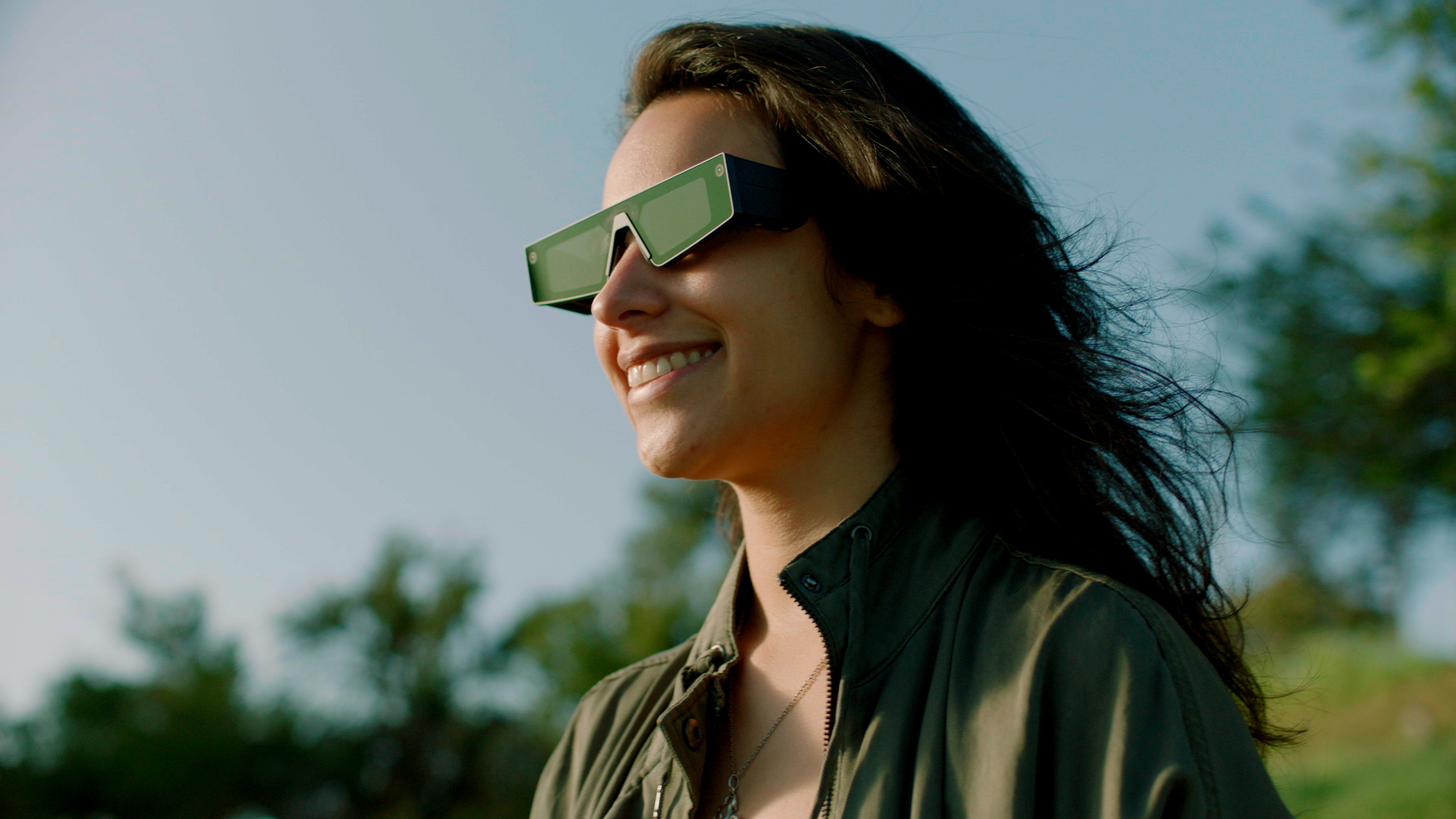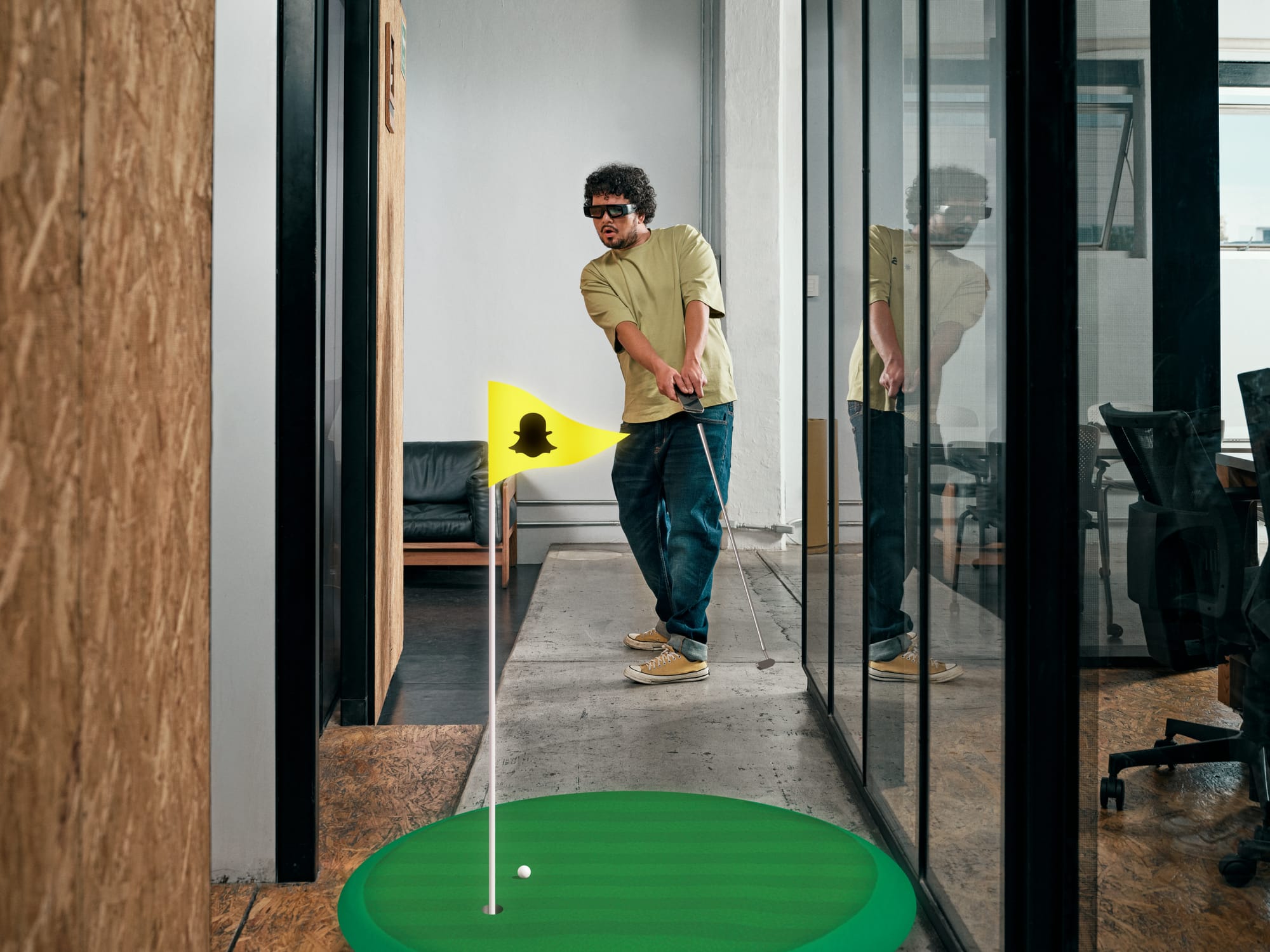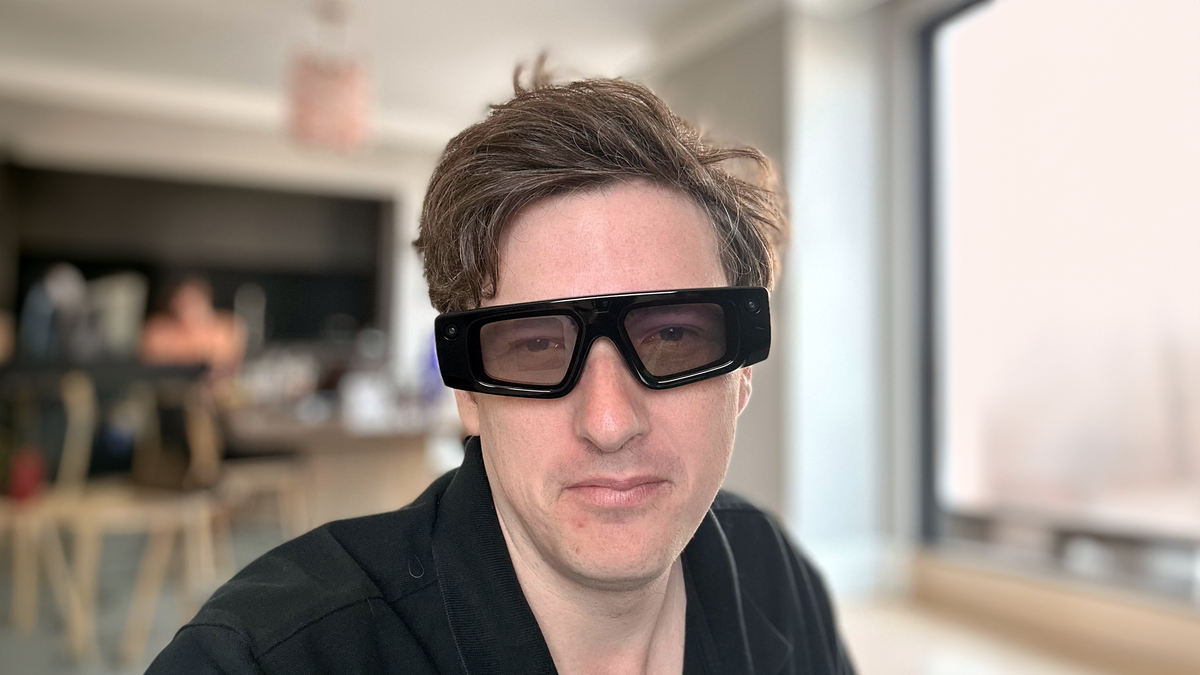The corporate behind Snapchat simply unveiled its fifth technology Spectacles.
The primary three generations of Spectacles have been launched as client gadgets from 2016 to 2019 however lacked any form of show or audio system. They functioned solely as digital camera glasses, just like right this moment’s Ray-Ban Meta glasses however with out the audio out and AI capabilities.
Fourth technology Spectacles have been unveiled in 2021 with waveguide shows for true AR, however have been solely accessible to pick out builders in very restricted portions. They have been a standalone AR system in true sun shades kind issue, that includes a Qualcomm Snapdragon XR1 chipset, a tiny subject of view, and an lively battery lifetime of simply half-hour.
The brand new fifth technology Snap Spectacles supply a wider subject of view, longer battery life, a extra highly effective processor, and better transparency to permit bystanders to see the wearer’s eyes. And this time Snap will supply them to any developer for $99/month.
The sphere of view has been elevated from simply 26 levels to now 46 levels diagonal, barely beneath HoloLens 2 and Xreal.
Spectacles now supply an angular decision of 37 pixels per diploma (PPD), just like Apple Imaginative and prescient Professional. That is made doable by way of LCoS shows, at the price of rendering Spectacles noticeably bulkier than microLED options like RayNeo X2.
Spectacles additionally characteristic “robotically tinting lenses”, which Snap claims makes visuals “vibrant, indoors or outside — even in direct daylight”.
Snap says the system is powered by “two Snapdragon processors from Qualcomm”, which break up the compute workload throughout every stem, growing efficiency whereas enhancing thermal dissipation. To additional cool the chips, Spectacles makes use of titanium vapor chambers. The twin-chip answer considerably reminds us of Snapdragon AR2, however Snap declined to inform us an actual identify for what chipset it is utilizing, suggesting it might be a brand new unannounced providing from Qualcomm.
Snap claims the motion-to-photon latency of Spectacles is 13 milliseconds, near the 12 milliseconds Apple claims for passthrough latency of Imaginative and prescient Professional.
The lively battery life has been elevated from 30 to 45 minutes, and a USB-C port in the back of one of many stems permits for prolonged utilization through an influence financial institution.
One space wherein Spectacles have regressed although is the burden and dimension. The unique AR Spectacles weighed 134 grams, whereas the brand new Spectacles weigh 226 grams. They’re additionally visibly bulkier, pushing the boundaries of what will be described as a real glasses kind issue.


Authentic AR Spectacles (left) vs New AR Spectacles (proper)
Snap Spectacles cannot seize first-person images and movies outdoors of apps, and there is not any audio streaming “but”, so it may’t play podcasts and music out of your telephone or take calls. However the AR capabilities let Spectacles do rather more than fundamental sensible glasses.
Spectacles run Snap OS, which the corporate claims is a “purpose-built, model new working system” for AR.
Spectacles has a built-in internet browser which helps YouTube, or you possibly can wirelessly mirror your telephone display screen to carry your cell apps into AR.
The glasses characteristic hand monitoring, and the principle menu of Snap OS is anchored to considered one of your arms to be interacted with utilizing the opposite. It additionally has on-device speech recognition for textual content enter.

Builders construct “Lenses” for Snap OS, the corporate’s phrases for apps, utilizing Lens Studio 5.0. Snap says builders can simply construct Lenses utilizing Spectacles Interplay Equipment, and extra superior Lenses will be written utilizing TypeScript and JavaScript. To establish, monitor, and increase actual world objects, SnapML will let builders use customized machine studying fashions of their Lenses.
Moreover, builders can leverage your smartphone as a 6DoF tracked controller. And with Spectator Mode close by smartphone customers can see what you are seeing in AR.
In future, by means of a partnership with OpenAI, builders may even be capable of use GPT-4o API “to supply extra context about what you see, say, or hear”.

LEGO has used Lens Studio to construct an AR sport for Spectacles referred to as Bricktacular. “Whether or not you are free constructing or tackling particular LEGO units, this expertise unlocks infinite prospects to problem your self and see how briskly you possibly can construct.”
Snap says ILM Immersive, the staff behind the Star Wars VR interactive tales Vader Immortal and Tales from the Galaxy’s Edge and the Marvel combined actuality interactive expertise What If…?, is at the moment constructing AR Star Wars experiences “that join you and your folks with the Star Wars Galaxy”.
Niantic is bringing a Peridot spinoff and Scaniverse to Snapchat Spectacles too.
Snap Spectacles will solely be accessible within the US, and builders renting Spectacles must decide to a 1-year minimal time period. In the event that they cease subscribing after that, they’re going to must ship the glasses again to Snap.
The Verge studies that these Spectacles are troublesome and costly to fabricate, with “1000’s of {dollars}” in parts, and that Snap is constructing solely on the order of 10,000. A client model at an inexpensive worth is probably going a few years away, and we’ll maintain an in depth eye on Snap for any indicators of it.
Meta Would possibly Demo A True AR Glasses Prototype In 2024
Meta hinted it’d demo a “prohibitively costly” true AR glasses prototype in 2024. “Within the area of client electronics, it is perhaps essentially the most superior factor that we’ve ever produced as a species.”

Snap’s reveal comes only a week earlier than Meta is anticipated to point out off its personal AR glasses. However Meta’s glasses are reportedly much more costly and arduous to fabricate, reaching a wider subject of view, and the corporate will not even promote them to builders.
You’ll be able to learn our hands-on impressions of Snap’s new AR Spectacles right here:
Arms-On With AR Peridot On Snap Spectacles
Arms-on impressions: Niantic’s Peridot is a standout instance of what Snap’s new AR Spectacles can do.

